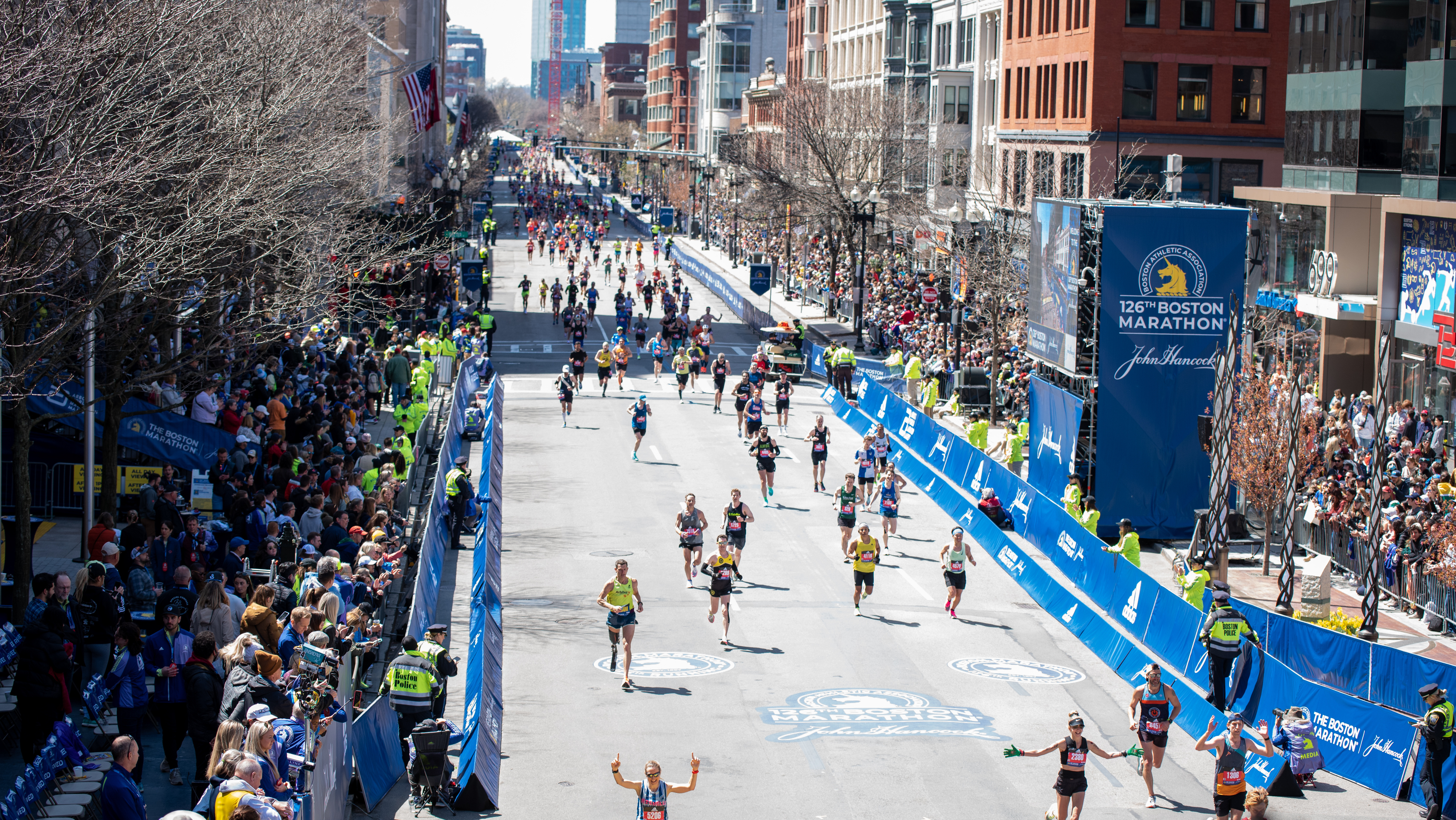
There are two things runners participating in the Boston Marathon tend to obsess about in the weeks leading up to race day: the weather, which tends to be unpredictable until you’re very close to the event, and the course, which is not your typical flat city marathon.
Since qualifying for the Boston Marathon is no easy feat, chances are you’re familiar with the course profile and included hills in your training to prepare for it. But even so, having a rough idea of what to expect from start to finish can help you plan your pacing strategy accordingly.
Of course, race advice is always best served up from those who have firsthand experience of the marathon you’re running, so I asked Boston Marathon veterans for their insight to guide you through the course and added my own based on my experience of running the race in 2023.
The Boston Marathon Route Map
Boston Marathon Route Miles 1-6
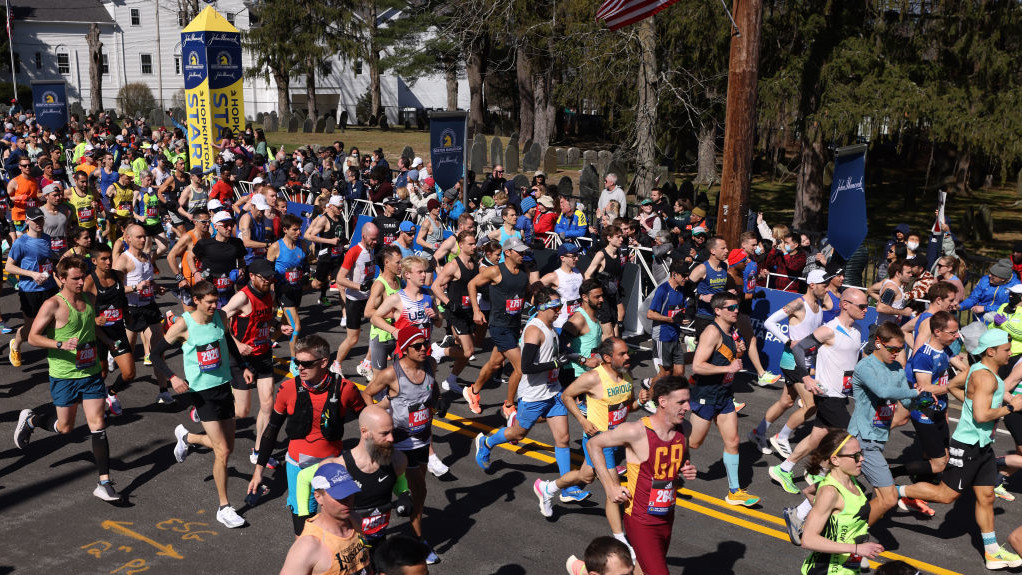
Fun fact: Most of the Boston Marathon course is not actually in the city of Boston. In fact, you don’t arrive in Boston until well into the final 5K. The race starts on a cramped two-lane road next to the town common and public library of Hopkinton. Atlanta-based five-time Boston Marathoner Jay Holder recommends taking advantage of the situation to start conservatively.
“The boom of the start cannon is a rush of adrenaline, but runners would be wise to use the tight space and massive crowds to keep the pace moderate,” says Holder. “The marathon starts with a massive 130ft elevation drop in the first mile, and going too fast can come with a price later in the race.” I’d add that you don’t want to brake too hard on this first downhill or you’ll unnecessarily fatigue your quads.
“Within the first mile of the race, you’ll see the locals out cheering even in the rain, and don’t be surprised within the first couple of miles if you hear ‘Sweet Caroline’, playing from speakers the locals set up,” says Susan Moriarty, a two-time Boston Marathoner. “It’s basically the theme song for the marathon, and you’re guaranteed to hear it playing several times more throughout the course.”
According to Holder, the course flattens as you enter Ashland, which is home to the original Boston Marathon start line at mile 2. You’ll stay in this town through mile 5, where the two-lane road will open up to chain stores, stoplights, and large crowds lining the course.
“As you climb out of Ashland up a small hill, you’ll run into Framingham just before the mile 5 marker,” Holder says. “You’ll cross train tracks—watch your step—and then cross the 10K split.”
The 10K mark is a good spot for friends or family to spectate, because it’s close to a subway station so they can easily head back toward Boston after you exchange high fives, Holder adds.
Boston Marathon Route Miles 7-10
According to Sarah King Cherington, an RRCA-certified run coach and native Bostonian who now lives in Houston and has run the race eight times, this section of the marathon course is an oft-forgotten one. But she also describes it as the most peaceful part, which takes you through Framingham and into Natick, where you’ll see mostly families out spectating in the miles before you hit the Wellesley College “Scream Tunnel.”
“Once you get past the 10K mark and all the downhills, it’s a great opportunity to rein yourself in and zero in on your marathon goal pace,” she says. “Lake Cochituate is the stand-out, so just take those moments to check in with yourself and enjoy the peacefulness heading into Natick, because it’s the last point of the course that will be that quiet.”
Boston Marathon Route Miles 11-15
According to Lizbeth Nieves, an eight-time Boston Marathoner based in Chicago, the beginning of mile 11 is a little quiet. You’ll see the “Entering Wellesley” sign and not many spectators as you navigate the small rolling hills flanked by tall trees leading up to mile 12. There is also a pretty steep downhill before you get to Wellesley, so be careful not to take it too fast.
“As you continue to run the course and approach mile 12, you will hear a roar that only gets louder and louder as you get to Wellesley College and go through the Scream Tunnel,” Nieves says. “Stay to the right if you want high fives, pictures, hugs or kisses, and tons of encouraging words shouted just for you. This part is, without a doubt, one of the most fun parts of the course, so enjoy it, soak it all in and don’t get carried away [by picking up the pace too soon].”
Nieves also notes that this part can become a bit crowded with runners stopping for a photo op or to engage with the Wellesley College community.
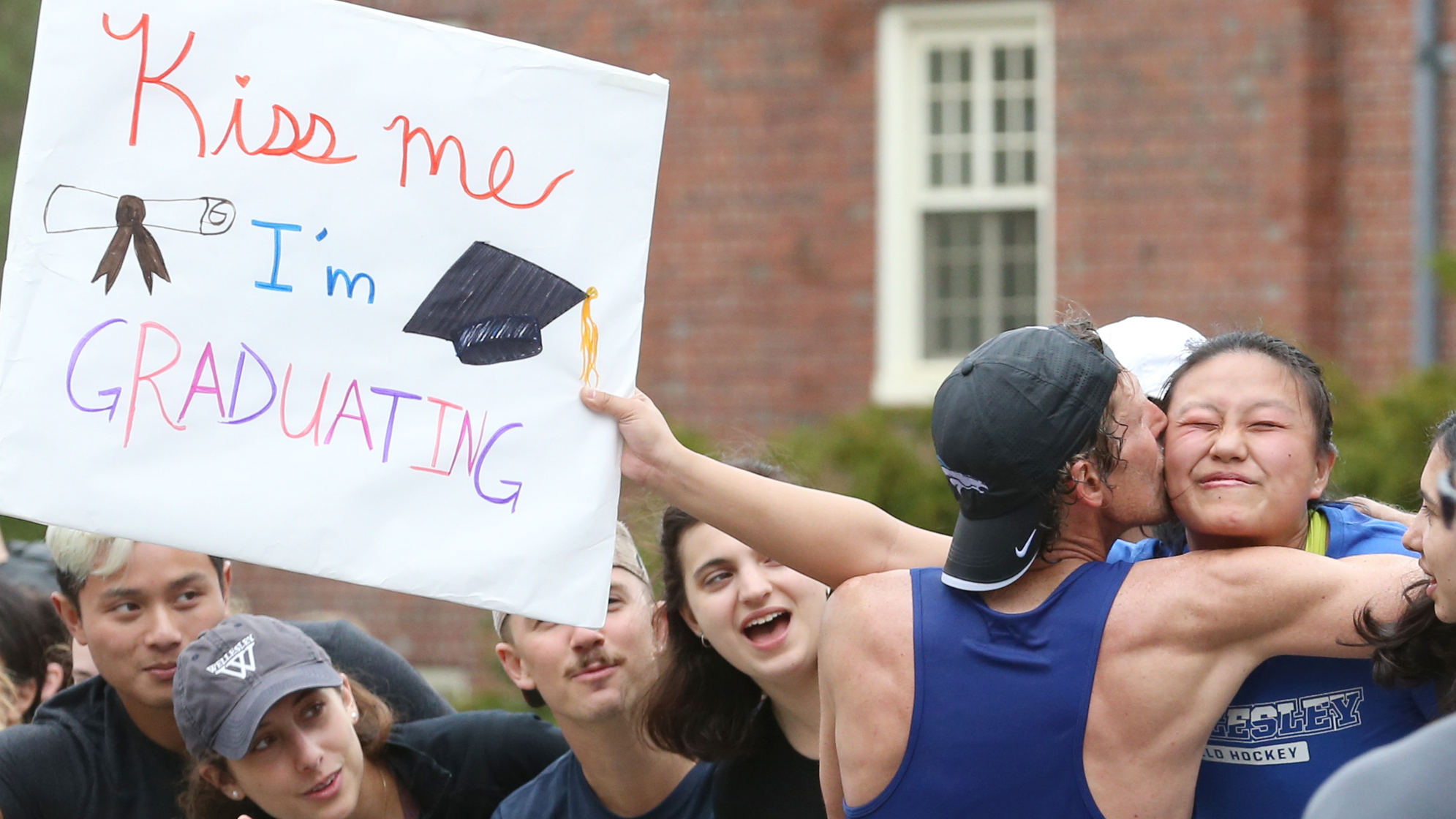
In downtown Wellesley you hit the halfway point and, according to Nieves, there’s minimal elevation for the next couple of miles, so it’s a good point to assess your pace and effort and make adjustments if need be.
“The crowd thins as you approach mile 15, [which is also where] there is the biggest drop in elevation on the course,” she says. “Don’t let gravity take you down faster. Control your speed and prepare for the Newton hills.”
Boston Marathon Route Miles 16-21
The infamous Newton Hills is one of the Boston Marathon’s signature sections, and many coaches (myself included) will agree that mile 16 is the true halfway point where the race really begins.
“You’ll need to hold yourself back a bit in the first half of the race—there is a lot of downhill in the first 10K of the Boston Marathon—so that you’ll have the strength to tackle the infamous Newton Hills,” says, Natalie Mitchell, an RRCA-certified running coach in Los Angeles who is gearing up for her third Boston Marathon.
Subbu Venkat, a five-time Boston Marathoner from Houston, points out that mile 16 is when the course goes over Route 128, which is a long and steep bridge where there aren’t many spectators.
“You’d think it’s Newton but it’s not yet and this hill can be daunting,” he says.
At about 17.5 miles, you’ll make a sharp right turn onto Commonwealth Avenue. Turn the corner and you’ll start the ascension of the Newton Hills, which is a series of climbs that end with the notorious Heartbreak Hill.
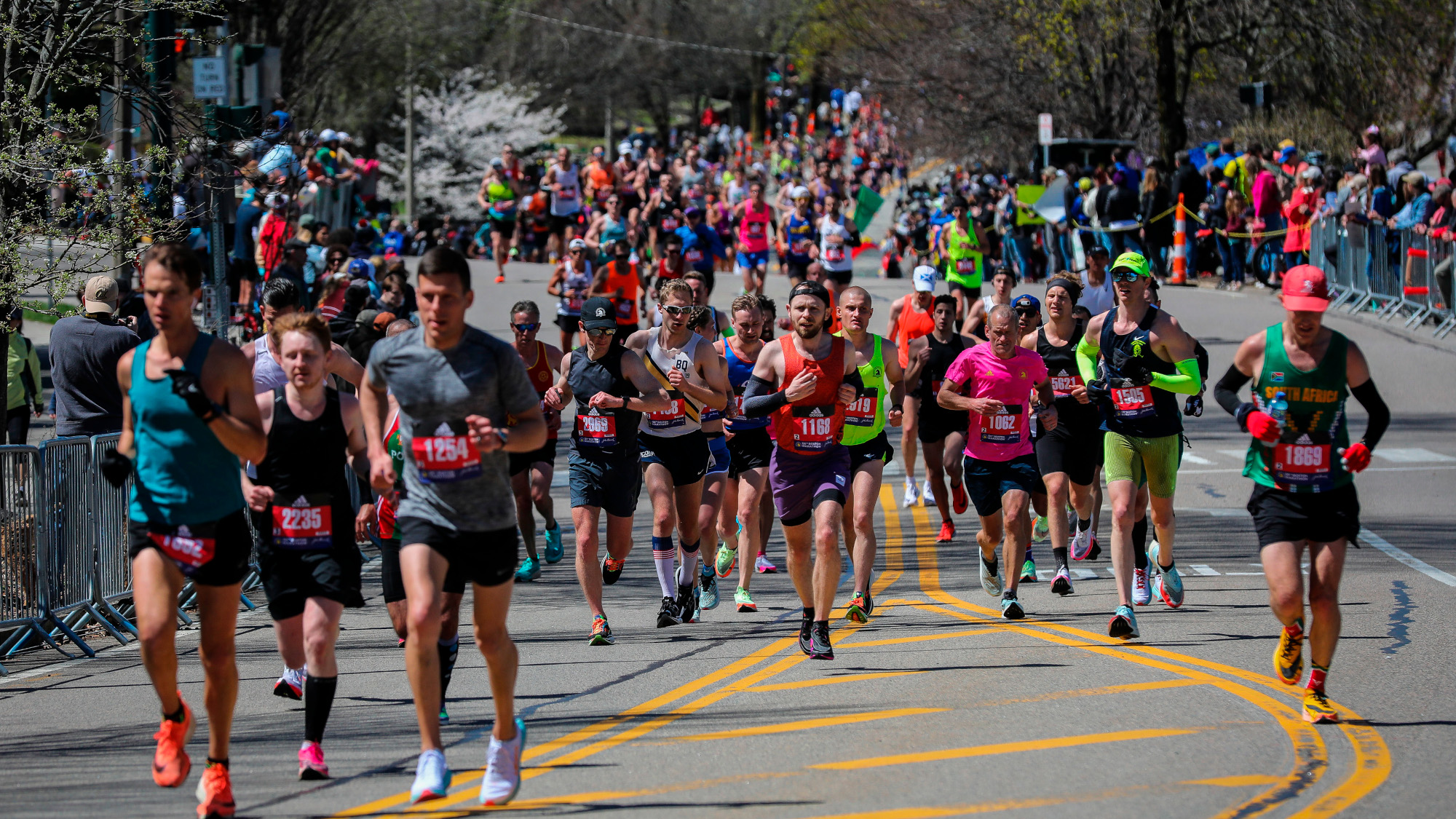
“Heartbreak Hill has a 3.3% grade which, if you think about it, is not incredibly tough, but when your legs have been pounding for nearly 20 miles, it will feel tough but manageable,” Mitchell says. “Let the crowd carry you through the series of hills. Relax, breathe, don’t worry about your pace—it will be slower—and get ready to take advantage of the downhill that is coming.”
I didn’t find Heartbreak Hill to be that bad or steep —just very long. I didn’t even know I’d finally reached it until I finally saw the “Congrats; you’ve conquered Heartbreak Hill” sign.
“Once you conquer Heartbreak Hill and go past Boston College [at around mile 21], it becomes quiet again, and the [stretch] between Chestnut Hill Reservoir and Cleveland Circle is somewhat tough mentally as you don’t have much in your tank and the finish is still at least 3-4 miles away,” Venkat adds.
Mile 21 is also where you’ll find the marathon’s most culturally diverse cheer section, home to the Pioneers Run Crew and TrailBlazHers Run Co. They bring the hype and get runners’ spirits up after they’ve survived one of the course’s toughest sections. Several professional runners, including Des Linden and Emma Bates posted on Instagram about it being one of the most memorable parts of the race.
Boston Marathon Route Mile 22-finish
According to Cris Gutierrez, a runner based in Columbus, Ohio, founder of Ope Athletic Club and a soon-to-be four-time Boston Marathoner, many runners mistakenly think the final post-Heartbreak-Hill miles will be smooth and easy. It can be—if you’ve run smart until then.
“While the final four miles of the course is a net downhill, Boston has a couple tricks ready for those that take this final section too lightly,” he says. “Keep your eye on the footing when you cross Beacon Street as you’ll be crossing over train tracks in this section. Take advantage of the downhill over this section to maintain your speed and let it help carry you over the little incline just before 23 miles.”
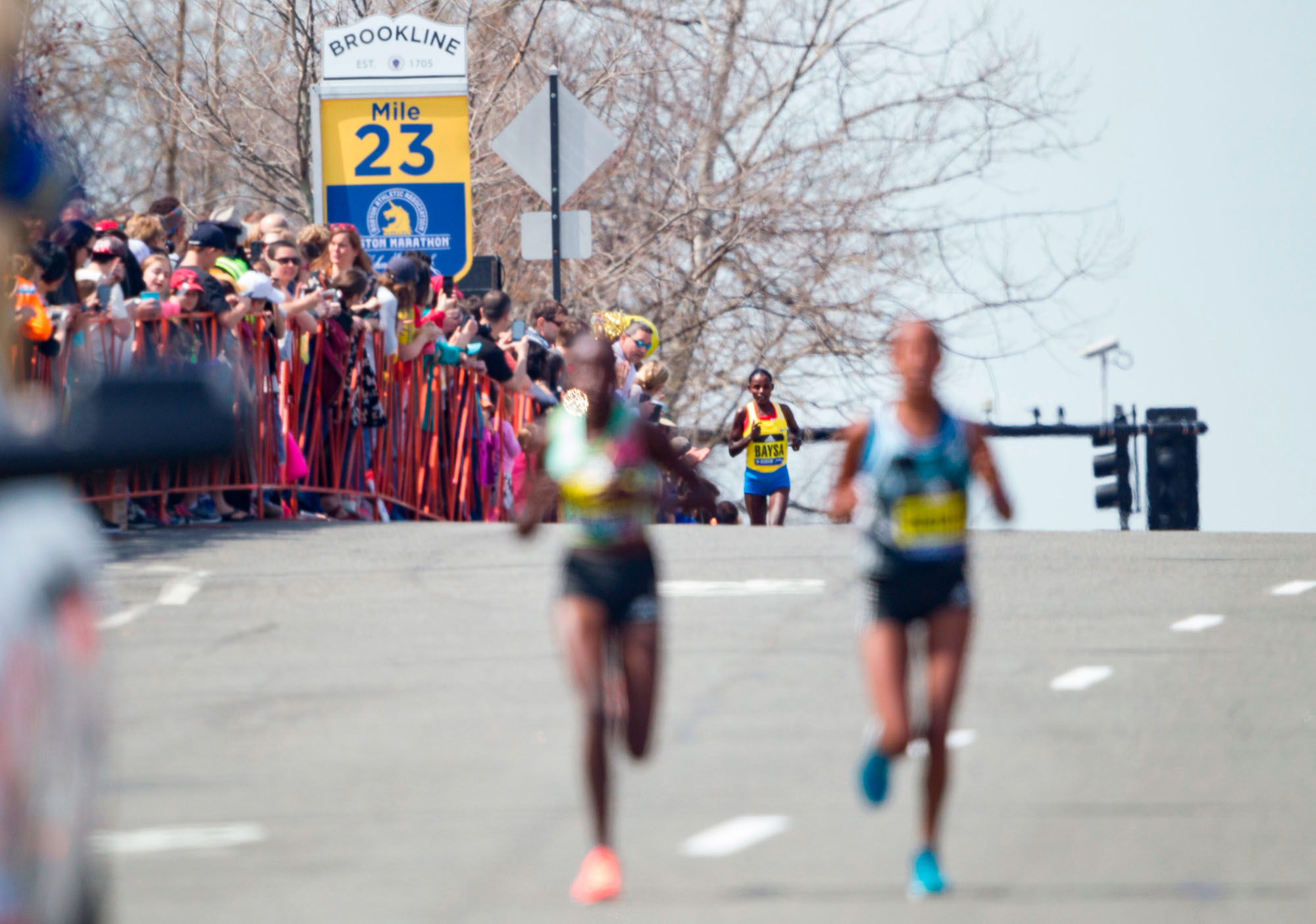
The crowd through Brookline is phenomenal, Gutierrez adds.
“If you’ve run your race smart, you’ll be cruising by runners that left their legs over the first half of the course,” he says. “Maintain effort over the little uphills and utilize each downhill to shake out the arms, stay loose, and maintain rhythm. The crowd will go crazy for those that look confident over this section, so let it give you confidence to finish strong.”
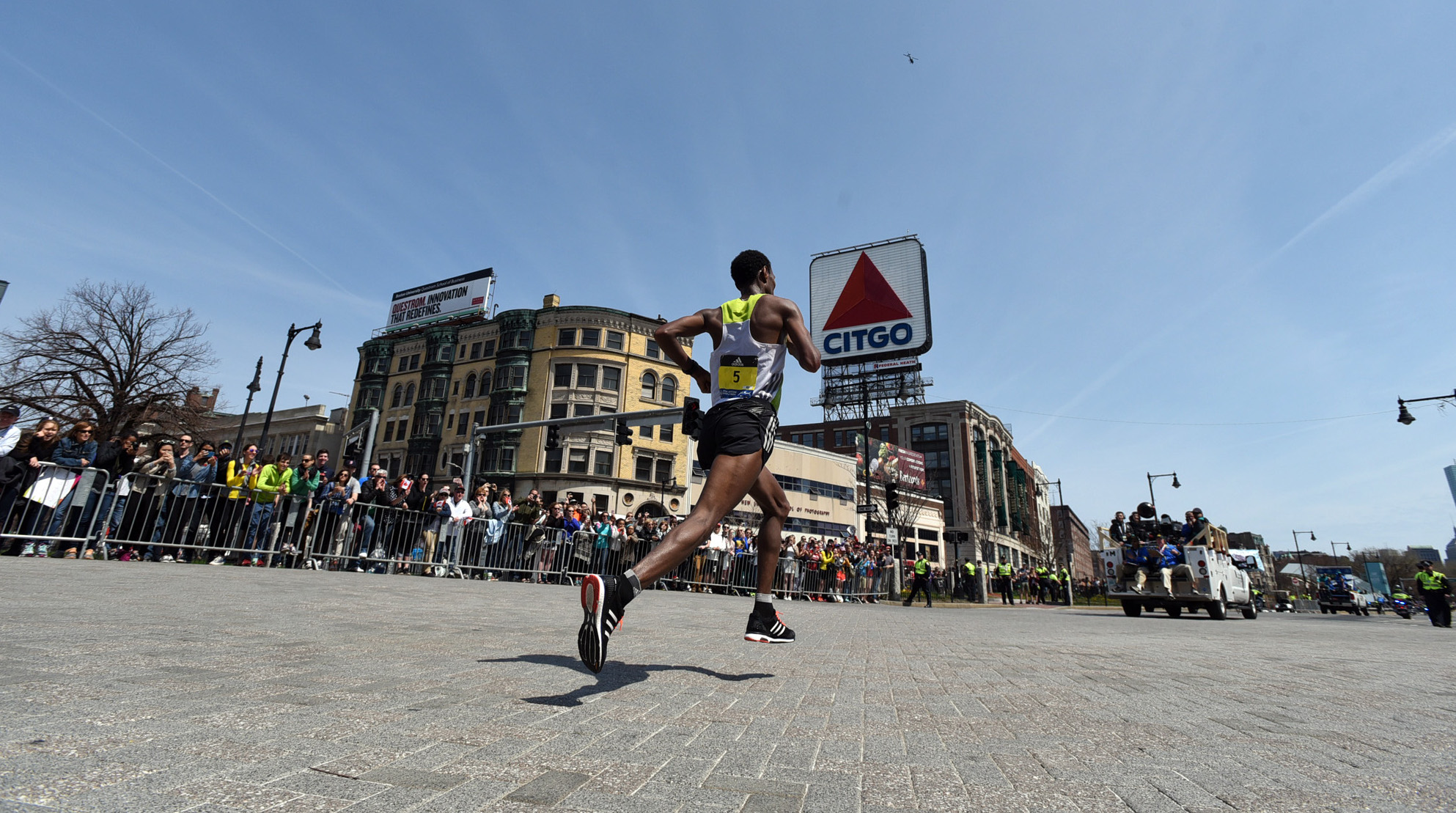
Just after 24.5 you’ll see it. Boston Marathon’s North Star, AKA the giant Citgo sign, Gutierrez says. Once you pass it about a mile later, you’ll arrive at Kenmore Square, where the crowd noise will be building.
“The incline underneath the Tommy Leonard Bridge seems like a mountain this far into the race with one kilometer to go, but keep your head up, pump your arms, and stay strong,” he says. “After this you’ll be home free and into the most memorable finish of your life. Right on Hereford, left on Boylston, for the final 600 meters of the course. Take it in. You’ve earned it. You’ve now finished the Boston Marathon.”
The Boston Marathon Route FAQs
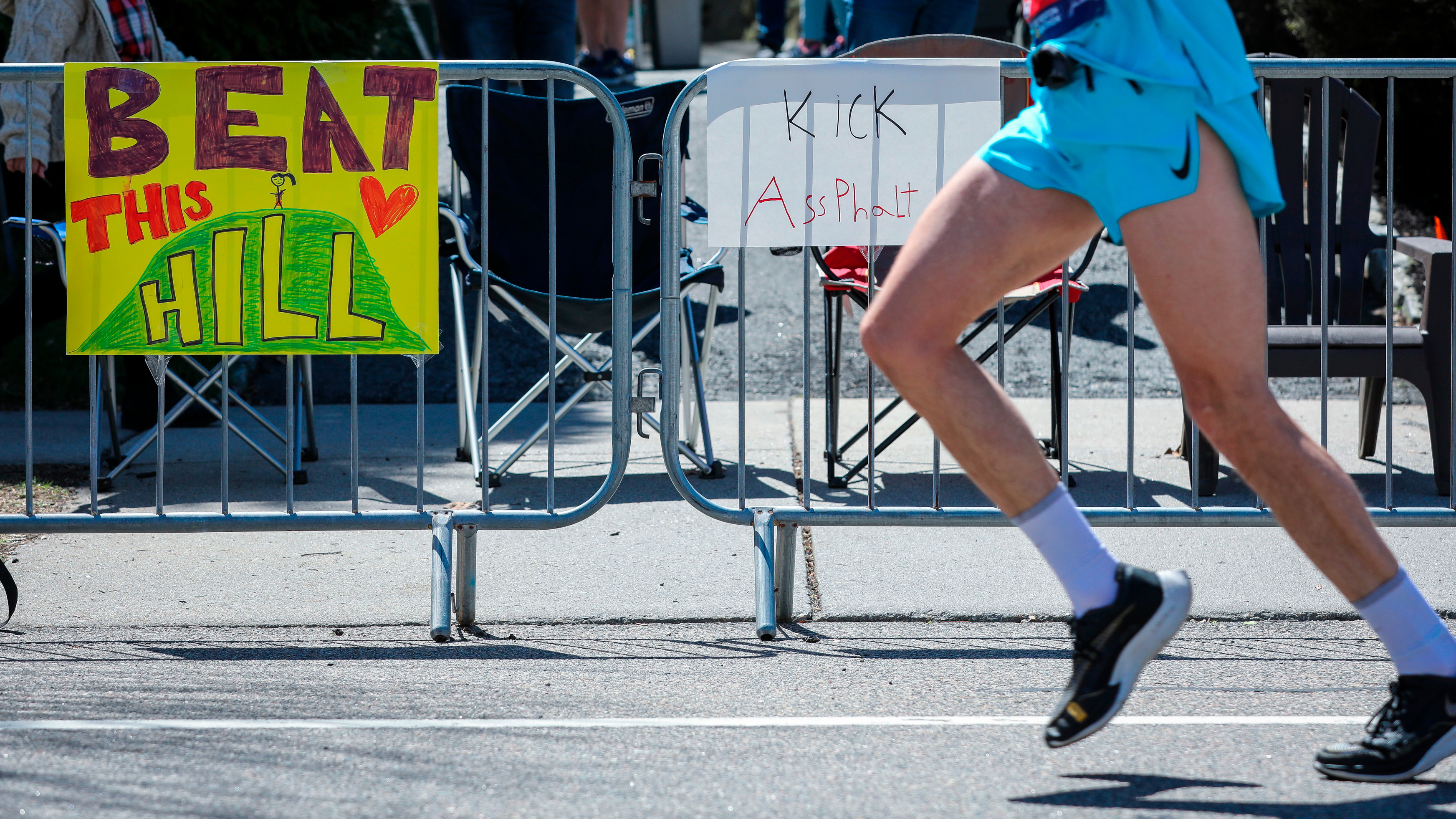
Is the Boston Marathon route flat?
No, the Boston Marathon is not flat—it’s actually net downhill. There’s a good chance you achieved your Boston qualifying time at a flat race, though. If you’re looking to run a new personal best at Boston, it’s not impossible, but it will take some extra work.
The Boston Marathon has sometimes been compared to other net-downhill races such as the California International Marathon, but Boston really is a beast of its own. Newton Hills are notorious for being tough not so much for their elevation grade, but for where they come on the course, especially if you’ve already pounded out your legs on downhills in the first several miles.
How long is the Boston Marathon?
As with all marathons, the Boston Marathon is 26.2 miles, or 42.2 kilometers. Unlike with many other big-city marathons, you can count on your watch GPS to be pretty accurate at Boston, as you actually run through several Boston suburbs before finally reaching the city, which you only cover for the last half-mile or so. But also, don’t be fooled into thinking it’s easy to run the tangents just because the course map makes it look like a straight shot with very few turns. While that’s not far off, most of the roads are quite wide, and if you get too caught up in weaving around and passing other people, you’ll easily rack up extra distance on your watch.
When does the Boston Marathon start?
The Boston Marathon begins later than many marathons. It kicks things off with the men’s and women’s wheelchair races at 9.02 and 9.05am ET, respectively, followed by the handcycles and duos at 9.30am, the professional men at 9.37am, the professional women at 9.47am, and the para athletics division at 9.50am.
The mass start begins with Wave 1 at 10am, followed by Waves 2, 3, and 4 at 10.25am, 10.50am and 11.15am, respectively. You’ll be bussed out to the start a couple of hours before your start time, so be sure to pack hydration and snacks or a second breakfast for that extra time.
Where does the Boston Marathon start?
The Boston Marathon starts in the town of Hopkinton, which is—you guessed it—about 26.2 miles from Boston. One thing I learned that no-one really talks about is that the walk from the bus dropoff is about a mile to the starting line. I would recommend taking advantage of any bathrooms you come across along the way, because after the late-morning hydrating that I wasn’t used to, I found I needed one more stop that I didn’t get to make by the time I reached the start, which meant I had to stop at mile 2, which likely cost me a minute or so on my final time.
Is there water on the Boston Marathon route?
As with most large marathons and road races, you will pass several aid stations providing water and Gatorade along the Boston Marathon course beginning at mile 2. Many runners nowadays choose to carry a handheld bottle to avoid having to stop or getting caught up in crowds at aid stations, but grabbing a cup to drink on the run or even walking through a water station as you sip doesn’t tend to affect your overall pace.







